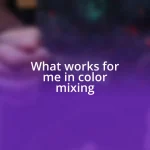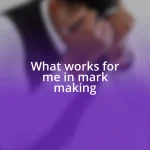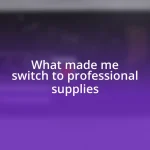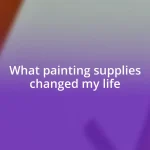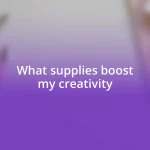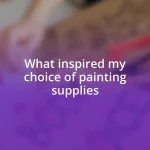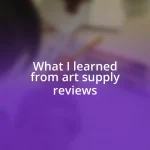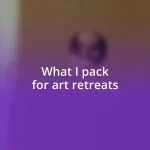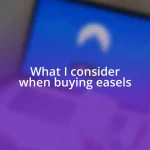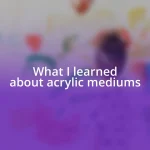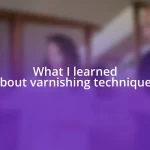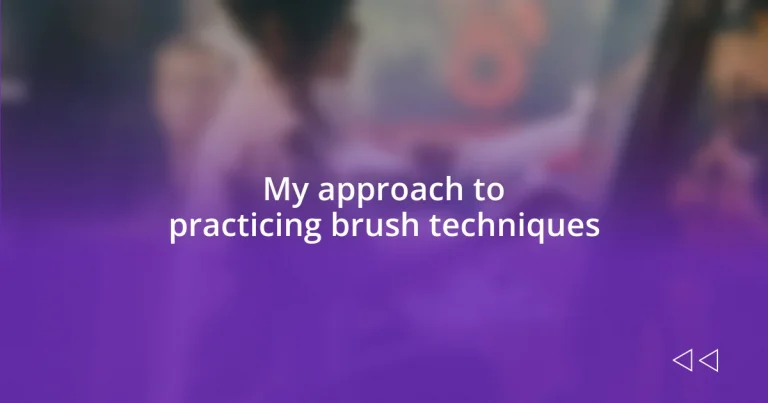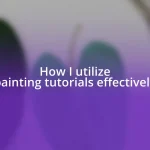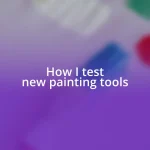Key takeaways:
- Brush techniques are essential for conveying emotion and depth in artwork, with each method offering unique storytelling opportunities.
- Using the right tools, like various brushes and palette knives, significantly enhances practice and encourages experimentation.
- Regularly evaluating progress and incorporating feedback from peers fosters growth, allowing artists to refine their techniques and discover new perspectives.
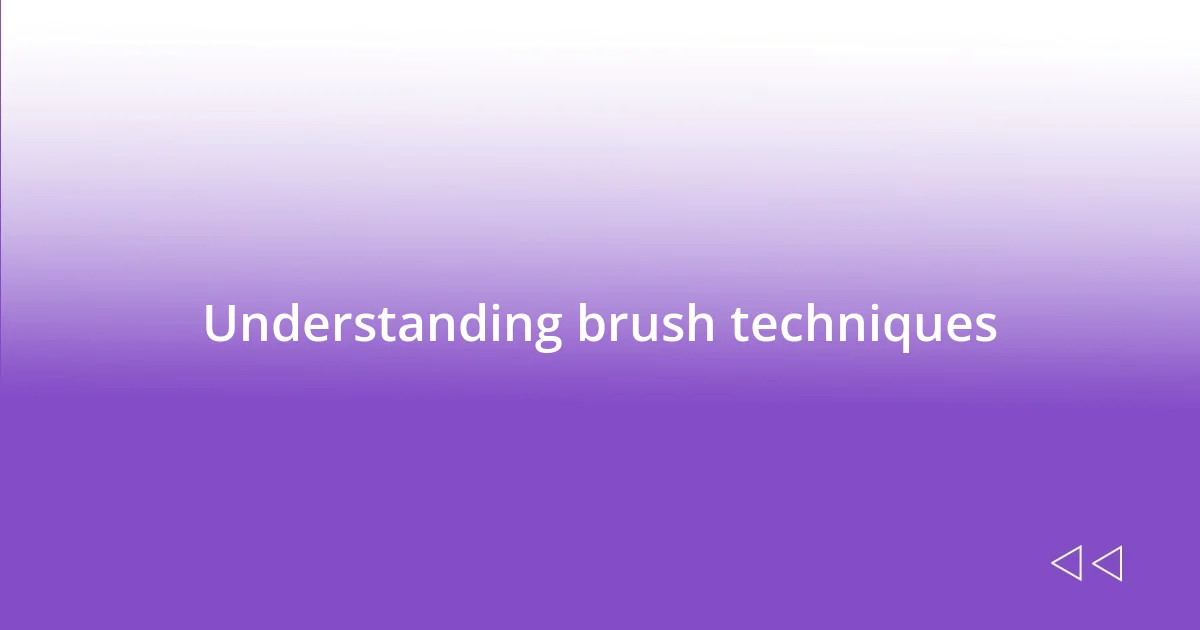
Understanding brush techniques
Brush techniques are the foundation of creating texture and depth in any artwork. When I first started, it felt overwhelming to choose between soft strokes and bold lines. Have you ever felt that same uncertainty? Experimenting with different brush strokes taught me that each technique can evoke a unique emotion or response in the viewer.
For instance, I vividly remember the first time I tried a stippling technique. It was like discovering a secret language in painting! The tiny dots transformed a simple landscape into something magical. It made me realize that brush techniques are not just about applying paint; they’re about communicating ideas and feelings.
Each technique offers a different storytelling opportunity, don’t you think? The way a brush glides across the canvas shapes our artistic voice. I encourage you to explore these techniques—play with light and shadow, experiment with pressure. You might discover something unexpected that perfectly captures your vision.
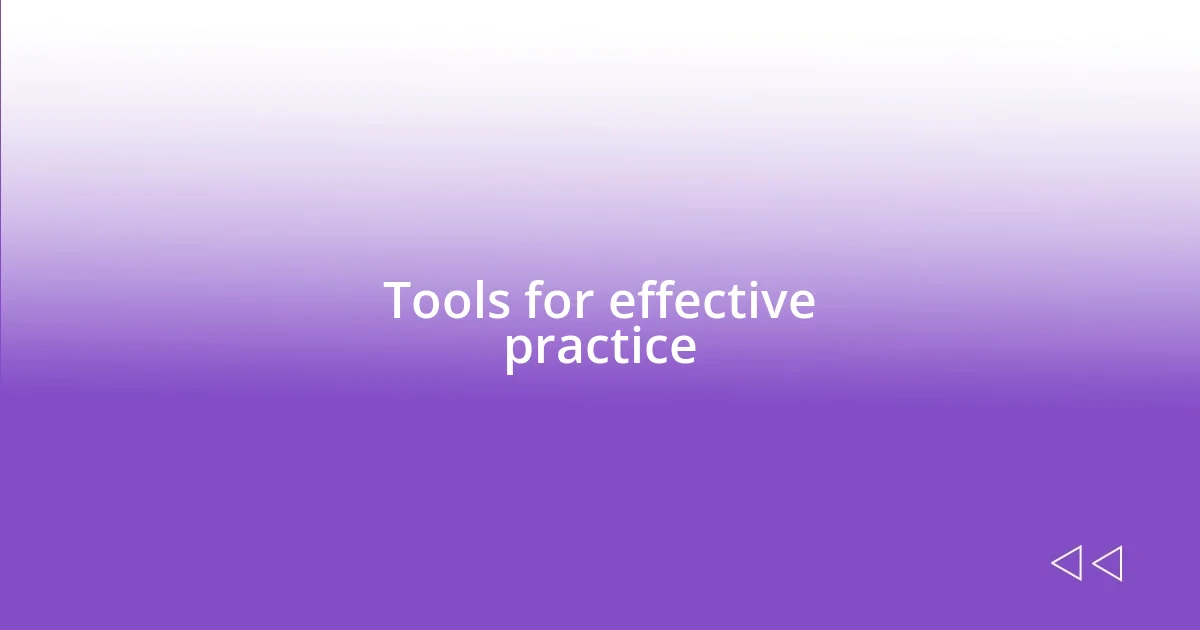
Tools for effective practice
When it comes to practicing brush techniques effectively, having the right tools makes all the difference. In my own journey, I found that using quality brushes tailored to specific techniques allowed me to better express my creativity. For example, a stiff bristle brush can produce bold, textured strokes, while a soft, rounded brush lends itself to gentle washes. The right selection encourages experimentation, making the practice feel more like play.
Here’s a quick list of essential tools that have significantly enhanced my practice:
- Variety of Brushes: Invest in different shapes and sizes – round, flat, and filbert. Each creates distinct effects.
- Palette Knives: Perfect for mixing colors and applying paint in a more textured way.
- Canvas or Paper: Use surfaces that suit your medium, whether it’s watercolor paper or a primed canvas.
- Water Jar or Medium: Keeping clean water or your preferred medium nearby helps you maintain brush cleanliness and control.
- Easel: A sturdy easel can save your back while providing a stable surface and better angles for your work.
These tools not only increase my confidence but also inspire me to explore techniques I might otherwise shy away from.
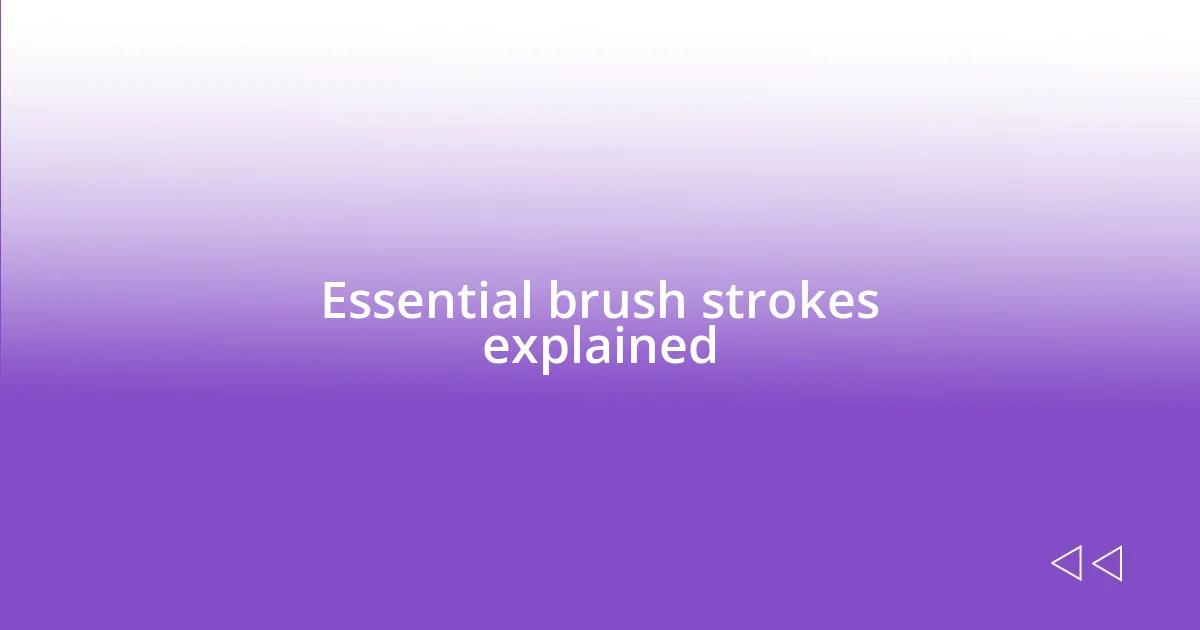
Essential brush strokes explained
When diving into essential brush strokes, I can’t help but reminisce about my early experiences. Each stroke teaches a new lesson, much like a conversation with a friend. For example, the gentle feathering technique creates a soft, delicate transition, reminiscent of a calming breeze on a summer day. I recall the first time I used it to portray clouds. The way it lightened my canvas was enlightening; it felt akin to whispering softness onto the surface, inviting the viewer into my serene sky.
One essential stroke I encountered was the cross-hatching technique, which adds depth and shadow to artwork. This method involves layering lines in various directions, and I often found myself engrossed in its rhythm. It reminded me of weaving a tapestry, where each line contributes to a richer story. I once spent an afternoon practicing this method with a still life setup. To my surprise, the more I embraced the complexity of cross-hatching, the clearer my objects appeared, almost as if they had come to life under my brush.
As I navigated through different styles, I discovered the power of the wash technique. Wash strokes cover large areas with color, providing a foundation for other details. I fondly remember using this technique for my first abstract piece. I was amazed at how quickly I could transform a blank canvas into a vibrant, immersive scene. It’s almost like laying down a warm blanket of color that invites exploration!
| Brush Stroke | Description |
|---|---|
| Feathering | A soft stroke used to create gentle transitions, perfect for skies and soft textures. |
| Cross-Hatching | A technique of layering lines in different directions to build depth and shadow. |
| Wash | A fluid, broad stroke to cover large areas, ideal for establishing backgrounds. |
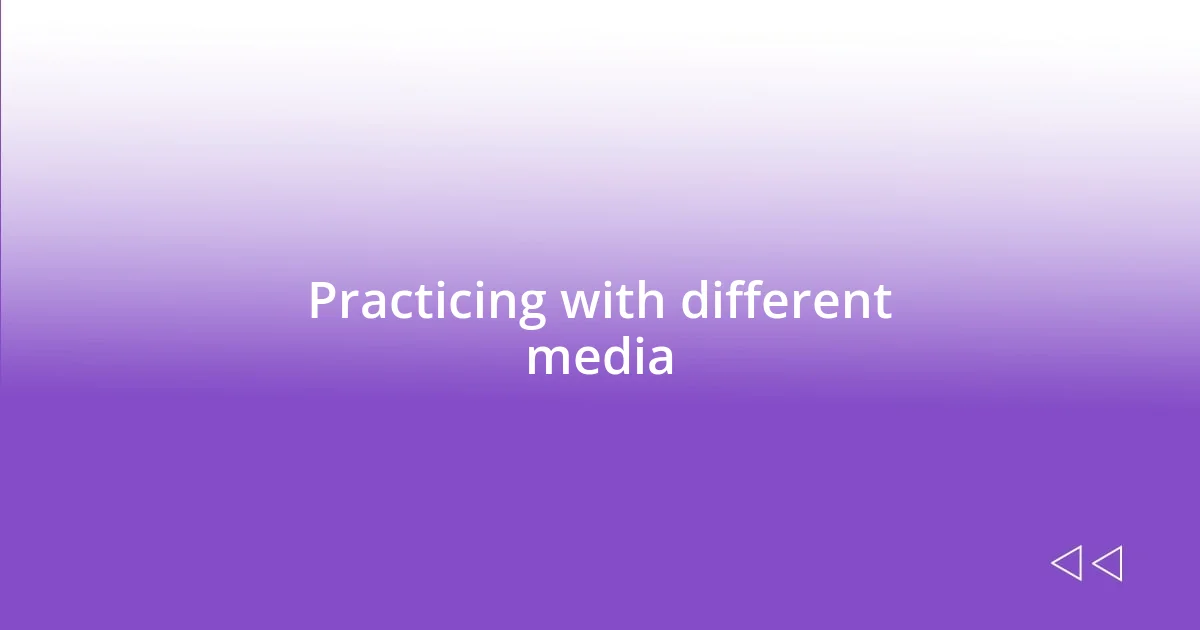
Practicing with different media
Practicing with different media can open up a world of creative possibilities. I remember the first time I switched from acrylics to watercolors; it felt like discovering a new language. Watercolors require a dance between water and pigment, and initially, I struggled to control the fluidity. But as I embraced that unpredictability, I found joy in the unexpected blooms and runs that formed on the paper. Isn’t it fascinating how a medium can shape your approach to art?
Then there was the day I experimented with pastels. The tactile experience of smudging color into a dreamy landscape was deeply satisfying. Pastels have a unique way of allowing you to build layers of texture, almost like sculpting with color. I vividly recall layering softer tones over vibrant hues, creating depth that felt both playful and intimate. Have you ever tried a medium that made you feel more connected to your work?
Now, let’s not underestimate the charm of digital painting. Transitioning to a digital canvas was eye-opening. I found myself quickly overwhelmed by the endless options, but once I familiarized myself with the tools, it was like having a world of colors at my fingertips. One of my favorite features is the undo button. It offered a safety net as I experimented boldly with new styles. Each medium has its quirks, and by practicing with a variety, I’ve learned to appreciate the nuances that deepen my understanding and expression as an artist.
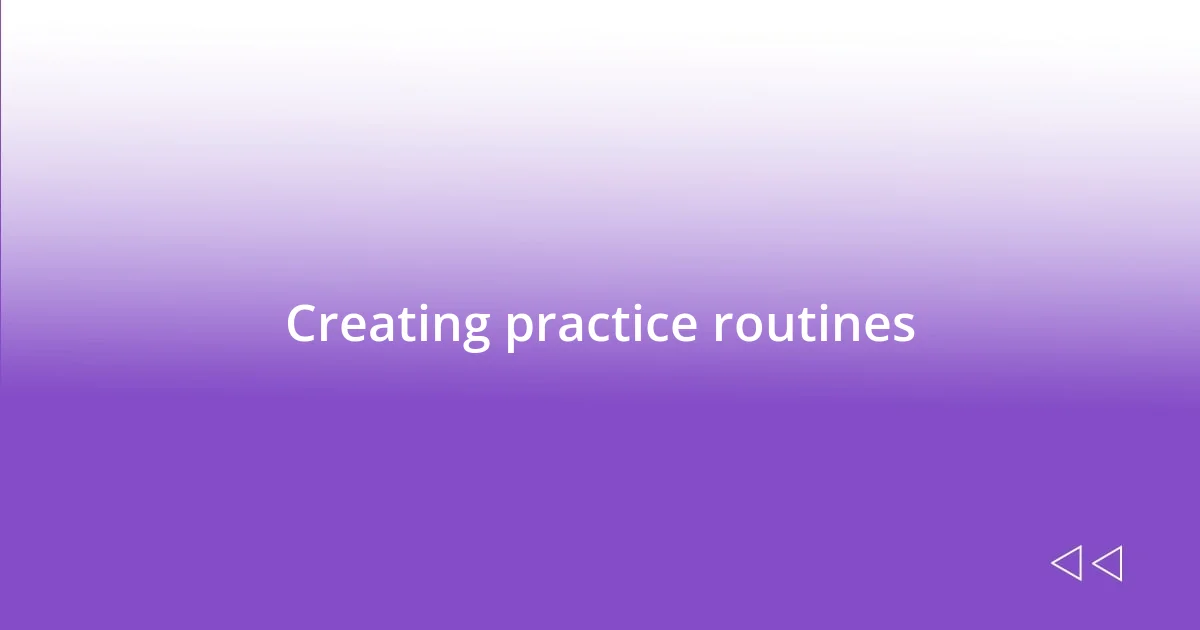
Creating practice routines
Creating a practice routine is an essential part of mastering any brush technique. I always found it helpful to set aside dedicated time each week just to focus on my strokes. When I was first starting out, I committed every Saturday morning to practice, which not only built my skills but also developed a comforting rhythm in my artistic journey. Have you ever noticed how routine fosters creativity?
I recommend balancing between structured exercises and free practice. For instance, I would spend 15 minutes on a specific technique, like stippling, and then allow myself to play freely for another half hour. This mix keeps the spark alive while ensuring I’m progressing. That’s when I discovered how liberating it felt to let go of rigidity and embrace the unpredictability of my creative process.
Additionally, don’t underestimate the power of setting goals, even simple ones. I like to chart my progress, whether it’s perfecting a particular stroke or completing a mini-project. Seeing tangible growth on paper has been one of my proudest moments; it’s like celebrating small victories along the way. Have you ever felt that rush of excitement when you realize how far you’ve come? That’s what makes creating practice routines so rewarding!
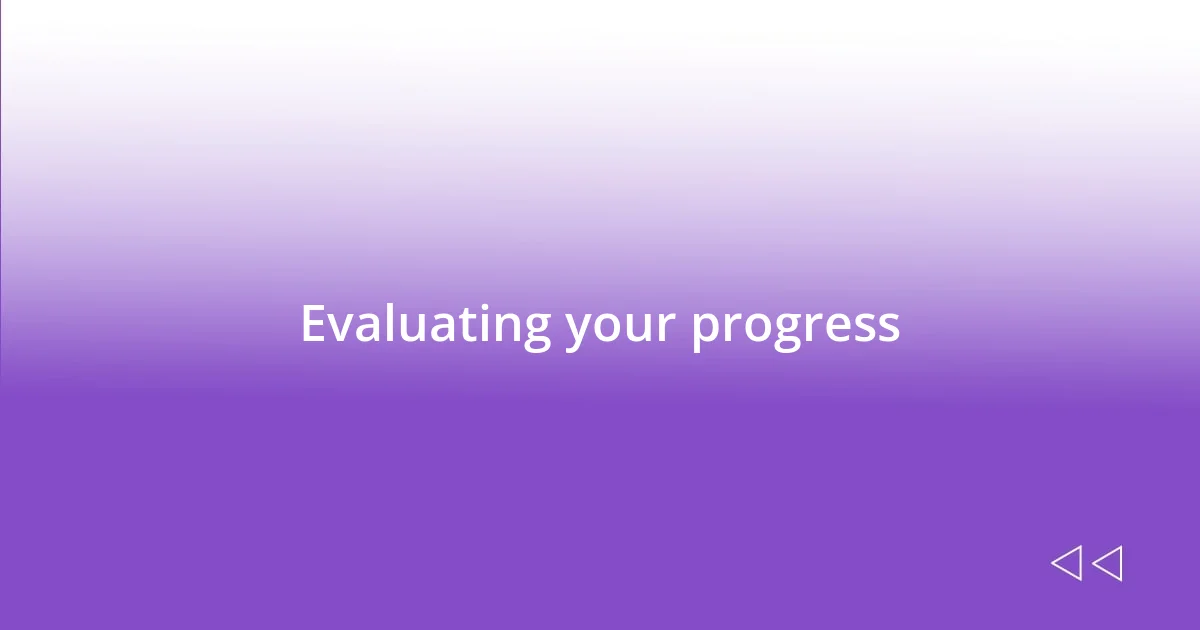
Evaluating your progress
Evaluating your progress is a crucial step in any artistic journey. I often find myself reflecting on my improvement after a dedicated practice session. For example, after spending weeks working on blending techniques, I would look back at my earliest attempts and feel a mix of pride and disbelief. Have you ever felt that exhilarating moment when you realize how much you’ve advanced?
One effective method I’ve used is to keep a visual record of my work. I remember creating a portfolio specifically to track my brush strokes over time. It was fascinating to flip through the pages and see the evolution of my style. Each image told a story—sometimes filled with excitement, other times with frustration. How rewarding it is to witness your growth in tangible form!
I also recommend using feedback from trusted peers or mentors along the way. When I first started showing my work to others, I was nervous but ultimately grateful for their insights. Their constructive criticism helped me refine my techniques and pushed me to take risks I might not have embraced otherwise. Isn’t it interesting how external perspectives can ignite new ideas and drive us forward?
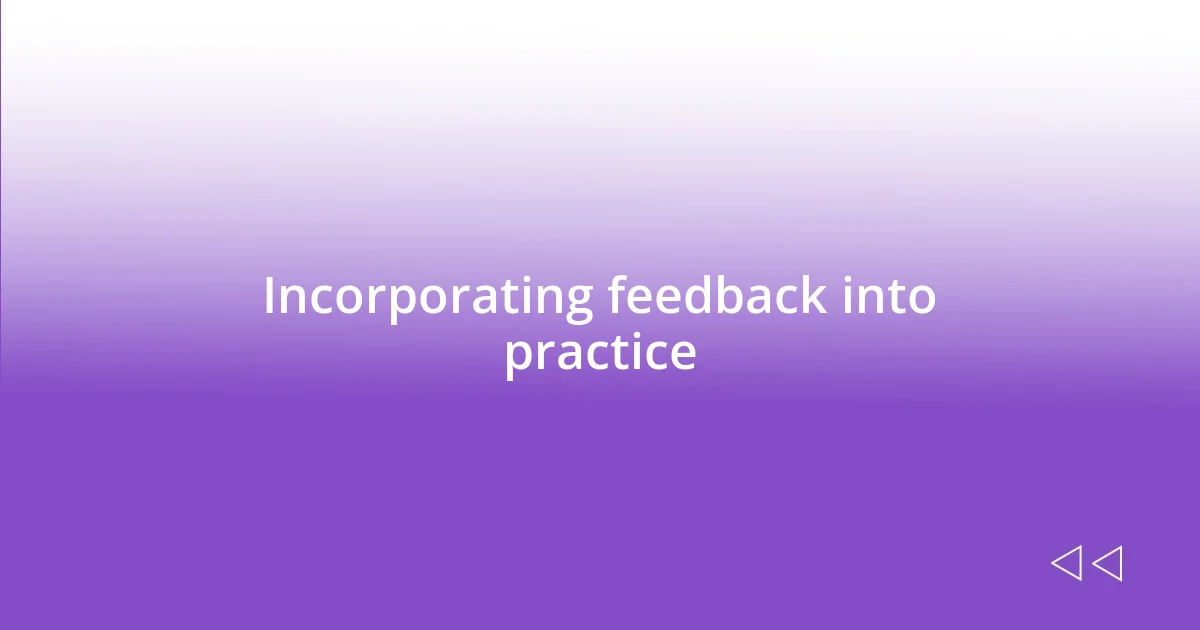
Incorporating feedback into practice
Incorporating feedback into practice is like adding seasoning to your favorite dish; it can truly enhance the flavor of your artistic journey. I remember a time when I was hesitant to share my work with others. However, when I finally opened up to a small group of fellow artists, their insights were invaluable. They pointed out areas for improvement that I hadn’t even noticed, igniting a spark of motivation to refine my techniques. Have you ever felt that rush of excitement when someone else’s perspective helps you see your work in a brand new light?
I often find myself revisiting feedback after a few practice sessions. It’s fascinating to see how external critiques transform into personal growth milestones. For example, after implementing suggestions about my color choices, I noticed a significant improvement in my paintings. Reflecting on this journey made me realize that feedback isn’t just criticism; it’s a pathway for discovery. Does it surprise you how much we can learn from the thoughts and opinions of others? I’ve found that even the tiniest adjustments can lead to remarkable changes.
Additionally, engaging in discussions about my work has opened new doors for creativity. I remember hosting a small critique session at my studio, where peer insights sparked dialogues I never anticipated. Through these conversations, I was challenged to experiment with techniques and perspectives that pushed me out of my comfort zone. It’s amazing how collaboration can breathe new life into your practice. How often do you seek feedback, and have you considered the immense potential it carries for growth?
